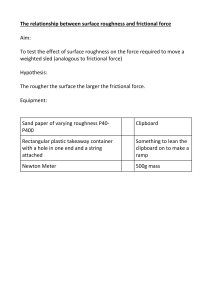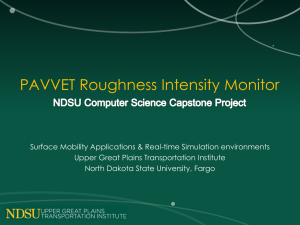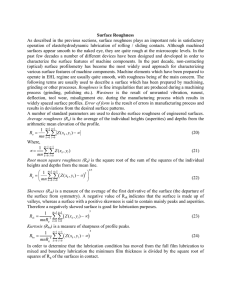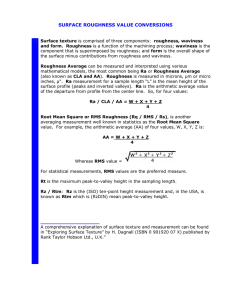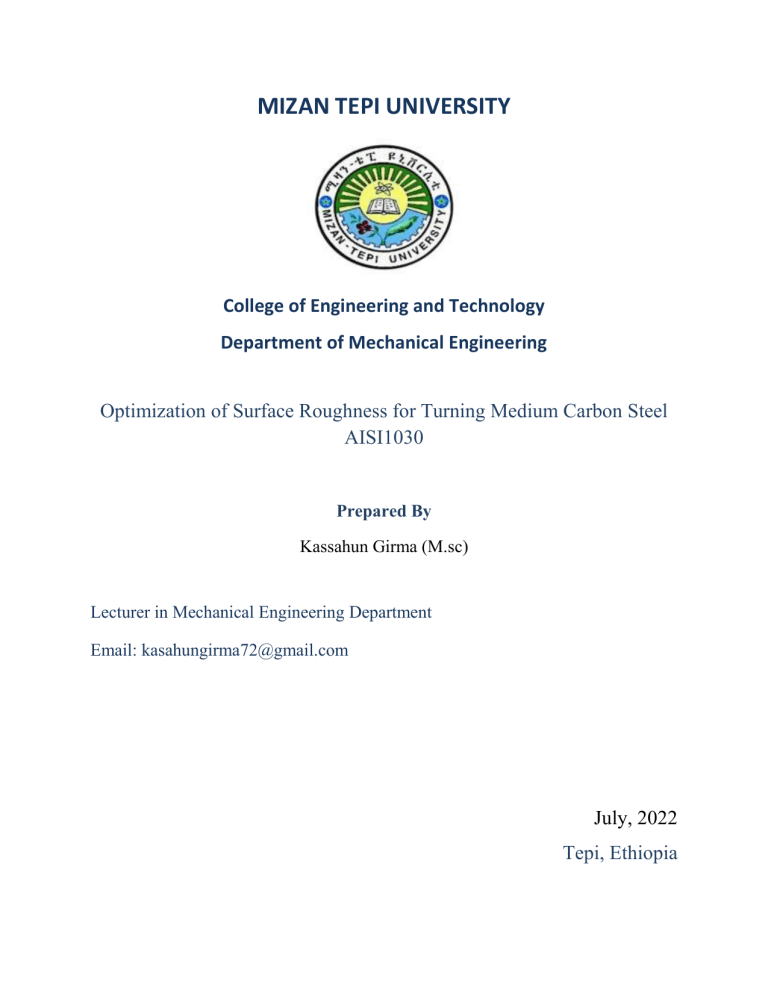
MIZAN TEPI UNIVERSITY College of Engineering and Technology Department of Mechanical Engineering Optimization of Surface Roughness for Turning Medium Carbon Steel AISI1030 Prepared By Kassahun Girma (M.sc) Lecturer in Mechanical Engineering Department Email: kasahungirma72@gmail.com July, 2022 Tepi, Ethiopia ABSTRACT In this Research entitled by “Optimization of Surface Roughness for Turning Medium Carbon Steel AISI1030” was investigated by considering Spindle speed, Feed rate & Depth of cut as chief Machining Parameters. Medium carbon steel AISI1030 is mostly used in high strength and toughness application such as Gear, Gear Shaft, Rear axle shaft, Spring valve, Levers, cams, crank shaft, Spline shaft etc. For minimum Surface Roughness Turning process has to be optimized on the basis of Cutting Parameter and trend. Surface Roughness response on the basis of parameter and Material Hardness has to be established. Samples of AISI1030 were examined under two states; normal samples and samples subjected to Hardening heat treatment. Experiment determined optimum surface roughness by controlling cutting parameters. Turning operation was conducted with spindle speed; 56rpm, 450rpm, 1120rpm feed rate; 0.17m/rev, 0.35mm/rev& 0.6mm/rev and depth of cut; 0.5mm, 1.0mm&1.5mm. The experiment was carried out based on Taguchi design of experiment. Optimum results were determined with the help of MINITAB software: S/N ratio, main effect, interaction effect & Analysis of Variance (ANOVA). In turning normal AISI1030 samples minimum surface roughness of 4.046µm was obtained at 4th combination of cutting parameters at 450rpm spindle speed. 0.17mm/rev feed and 1.0mm DOC. From ANOVA spindle speed plays significant role with contribution of 35.64% to minimize surface roughness followed by DOC (31.62%) & last feed rate with contribution of 28.6%. In order to minimize surface roughness it is recommended to increase spindle speed and decrease feed rate. For AISI1030 samples subjected to hardening heat treatment minimum surface roughness of 5.206µm (28.67% higher than that of normal AISI1030) is obtained. It was found that further increase in spindle speed worsen surface finish. From ANOVA in turning hardened AISI1030 feed rate contributes total of 56.64% followed by spindle speed 39.26% and DOC with 2.89% contribution. To minimize surface roughness both feed rate and spindle speed has to be reduced. The study was successful in achieving optimization of turning process in reducing Surface Roughness using a Taguchi Design of Experiment. Key words: Optimization; Surface Roughness; Taguchi; Turning; ANOVA
